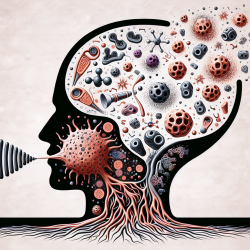Exploring the U-Shaped Dose-Response of Cisplatin on Vestibular Hair Cells
As a speech-language pathologist deeply invested in the well-being of children, understanding the mechanisms of drug-induced damage to the auditory system is crucial. The recent research article titled Cisplatin-induced vestibular hair cell lesion-less damage at high doses sheds light on the intriguing effects of cisplatin, a widely used anticancer drug, on vestibular hair cells.
Key Findings from the Research
Cisplatin is known for its ototoxic effects, damaging sensory hair cells in the cochlea and vestibular system. This study, however, presents a paradoxical U-shaped dose-response curve. While low doses of cisplatin cause significant damage to vestibular hair cells, higher doses appear to result in less damage. This unexpected pattern is thought to be regulated by copper transporters, specifically Ctr1, ATP7A, and ATP7B, which modulate the uptake and extrusion of cisplatin.
Implications for Practitioners
Understanding the dose-response relationship of cisplatin is vital for practitioners aiming to mitigate its ototoxic effects. Here are some practical steps to consider:
- Awareness and Monitoring: Be vigilant about the potential ototoxic effects of cisplatin, especially at lower doses. Regular audiometric monitoring can help detect early signs of hearing loss.
- Collaborative Approach: Work closely with oncologists to balance the therapeutic benefits of cisplatin against its ototoxic risks, especially in pediatric populations.
- Further Research: Encourage research into protective strategies that could leverage the role of copper transporters to mitigate cisplatin-induced damage.
Encouraging Further Research
This study opens avenues for further exploration into the mechanisms underlying the U-shaped dose-response. Understanding how copper transporters influence cisplatin uptake could lead to novel interventions to protect against ototoxicity. Practitioners are encouraged to stay informed about ongoing research and consider participating in studies that seek to optimize treatment protocols.
Conclusion
The findings from this study highlight the complex relationship between cisplatin dosage and vestibular hair cell damage. By understanding these dynamics, practitioners can better protect the auditory health of their patients, particularly children who are more vulnerable to hearing loss. For a deeper dive into the research, I highly recommend reading the original paper.
To read the original research paper, please follow this link: Cisplatin-induced vestibular hair cell lesion-less damage at high doses.










